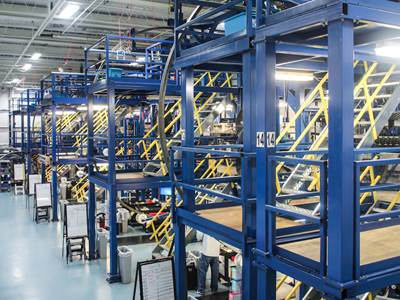CNT-enhanced prepregs: commercial & production-capable
N12 Technologies’ NanoStitch and Surface Layer System (SLS) products are part of a new generation of nanomaterials aimed at delivering macro-level benefits in products produced at commercial scale.
Carbon nanotubes. They’ve have been around for 20 years, with attempts at commercialization for a decade. But until now, says Dr. Ryan Williams, senior scientist for N12 Technologies (Cambridge, MA, US), “companies have not seen the performance or scale promised.” Selected as a 2015 Top Start-up by the Silicon Valley-based non-profit TIE50 global annual awards program, Williams’ Massachusetts Institute of Technology (MIT, Cambridge, MA, US) spin-off firm aims to change that. “Our goal is to make sure our technology delivers on its promise,” he says.
N12 Technologies’ NanoStitch and Surface Layer System (SLS) products are part of a new generation of nanomaterials aimed at delivering macro-level benefits in products produced at commercial scale. N12 also focuses on the reinforcement, rather than the
resin. Mixing CNTs into resin has presented real challenges, Williams claims, both to performance and part production scale up, because CNTs agglomerate, hindering optimal dispersion and orientation.
“We put vertically aligned carbon nanotubes (VACNTs) at the interface of each lami- nate ply and align them so that the user doesn’t have to do this,” Williams explains, giving the analogy of chopped carbon fiber vs. unidirectional prepreg. “You need not only the nanomaterial, but also placement and alignment in order to achieve high performance and light weight,” he says. “We do this at the nano scale, but with a completely drop-in product. We don’t expect the composites industry to modify its methods to use our products.”
Williams says that users can roll, cut and handle N12 NanoStitch prepreg during layup or on an automated tape laying machine just like other prepregs. Further N12 has, he says, “capacity now to deliver thousands of square meters of NanoStitch materials per year and have completed another round of financing to expand this capacity to millions of square meters within the next 3-4 years.” N12 has commissioned a production-rate reactor for the aligned CNTs and has a plan for scaling production at reasonable cost to support expanded industrial-scale supply.
“We are working with a number of the large prepreg manufacturers to deliver NanoStitch-enhanced products — basically the prepregs already widely used in the industry — but with NanoStitch applied,” Williams explains. “We are also devel- oping a resin film delivery strategy, which gives the industry design freedom in what they do with the technology.” For example, some companies want to apply the NanoStitch globally, while others want to locally reinforce a line of rivet holes or in a particular spot on a golf club shaft.
N12 also aims to be as close to cost-neutral as possible. He explains, “For example, if you have a 64-ply laminate to meet performance requirements, our NanoStitch technol- ogy might achieve a 10% weight savings by boosting the performance, which then balances the additional cost of adding in the technology.” He says the company has worked mostly with epoxies but also with phenolics, bis- maleimide and thermoplastics. It is already testing products with dozens of companies and has more than 100 different relationships established with potential customers, some in the very initial stages and others in physical component testing.
Related Content
Recycling end-of-life composite parts: New methods, markets
From infrastructure solutions to consumer products, Polish recycler Anmet and Netherlands-based researchers are developing new methods for repurposing wind turbine blades and other composite parts.
Read MoreThe lessons behind OceanGate
Carbon fiber composites faced much criticism in the wake of the OceanGate submersible accident. CW’s publisher Jeff Sloan explains that it’s not that simple.
Read MoreSulapac introduces Sulapac Flow 1.7 to replace PLA, ABS and PP in FDM, FGF
Available as filament and granules for extrusion, new wood composite matches properties yet is compostable, eliminates microplastics and reduces carbon footprint.
Read MoreCryo-compressed hydrogen, the best solution for storage and refueling stations?
Cryomotive’s CRYOGAS solution claims the highest storage density, lowest refueling cost and widest operating range without H2 losses while using one-fifth the carbon fiber required in compressed gas tanks.
Read MoreRead Next
Plant tour: A&P, Cincinnati, OH
A&P has made a name for itself as a braider, but the depth and breadth of its technical aptitude comes into sharp focus with a peek behind usually closed doors.
Read More“Structured air” TPS safeguards composite structures
Powered by an 85% air/15% pure polyimide aerogel, Blueshift’s novel material system protects structures during transient thermal events from -200°C to beyond 2400°C for rockets, battery boxes and more.
Read MoreVIDEO: High-rate composites production for aerospace
Westlake Epoxy’s process on display at CAMX 2024 reduces cycle time from hours to just 15 minutes.
Read More























